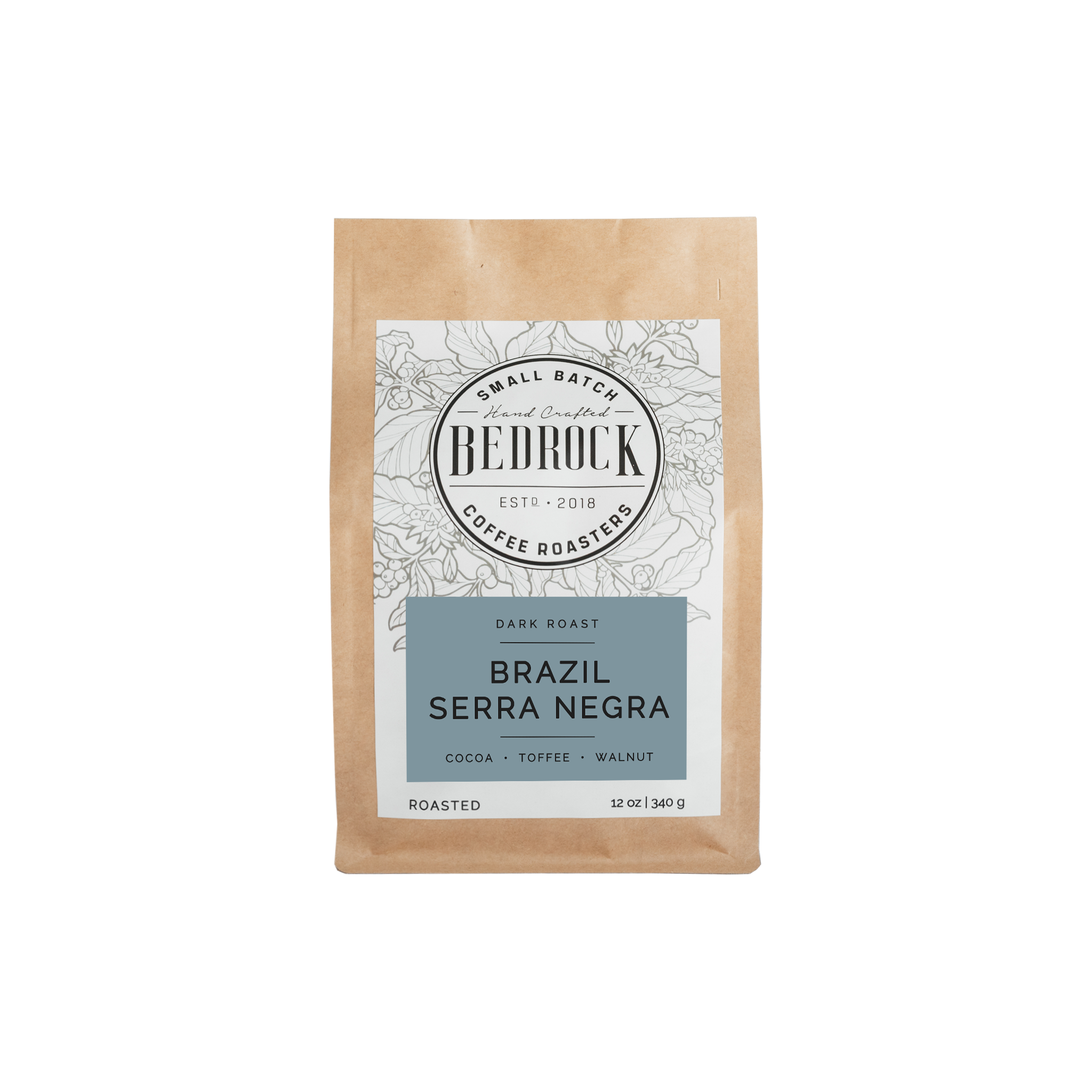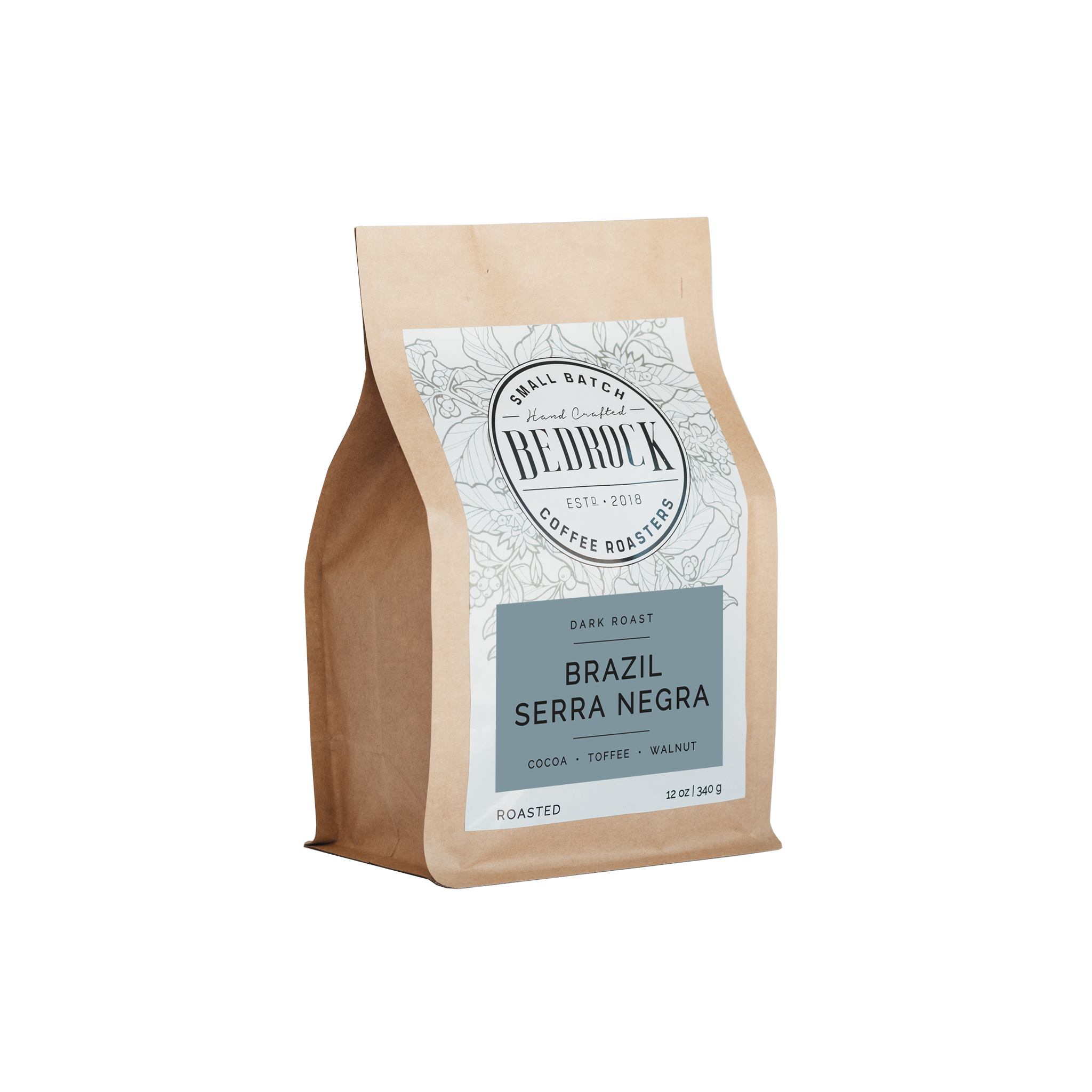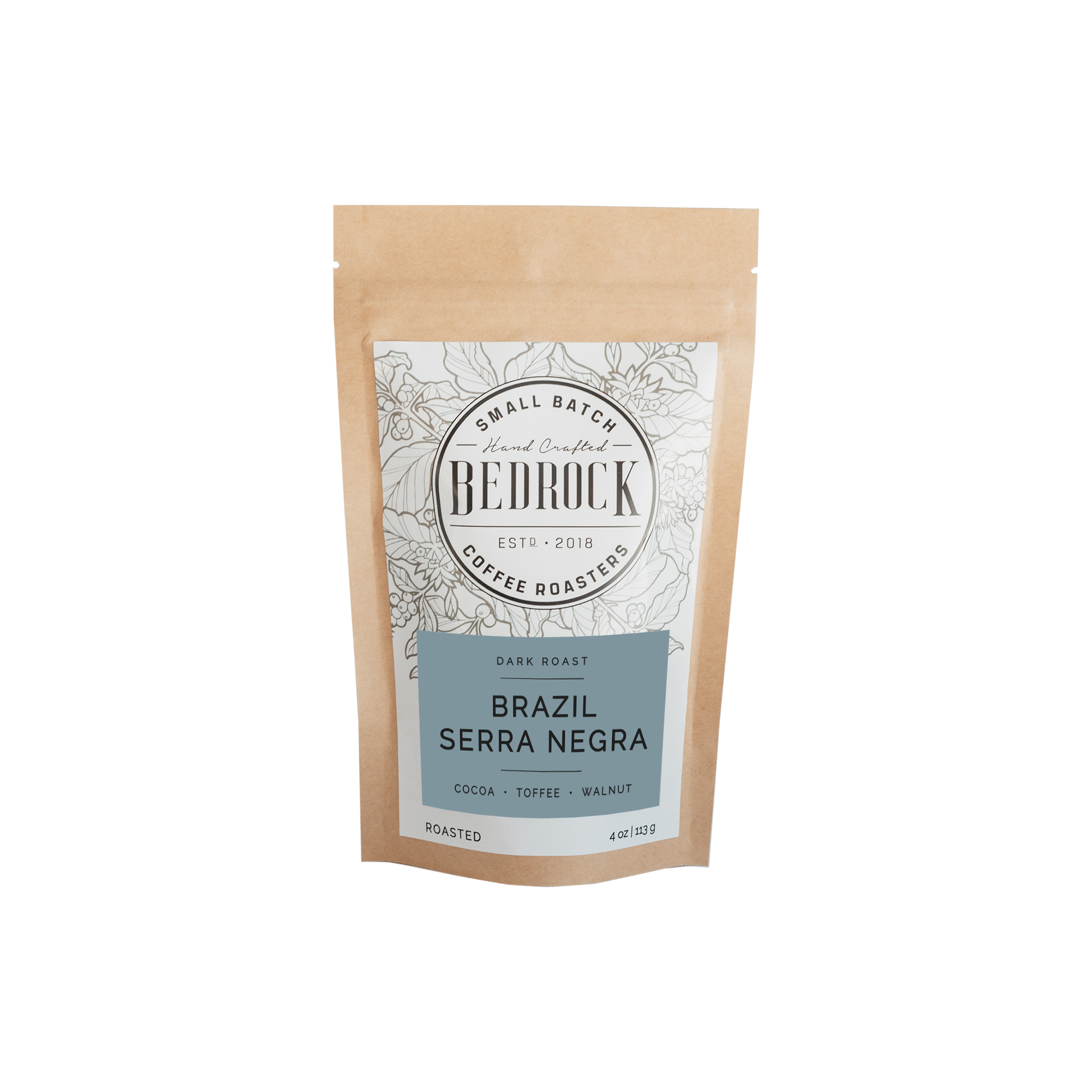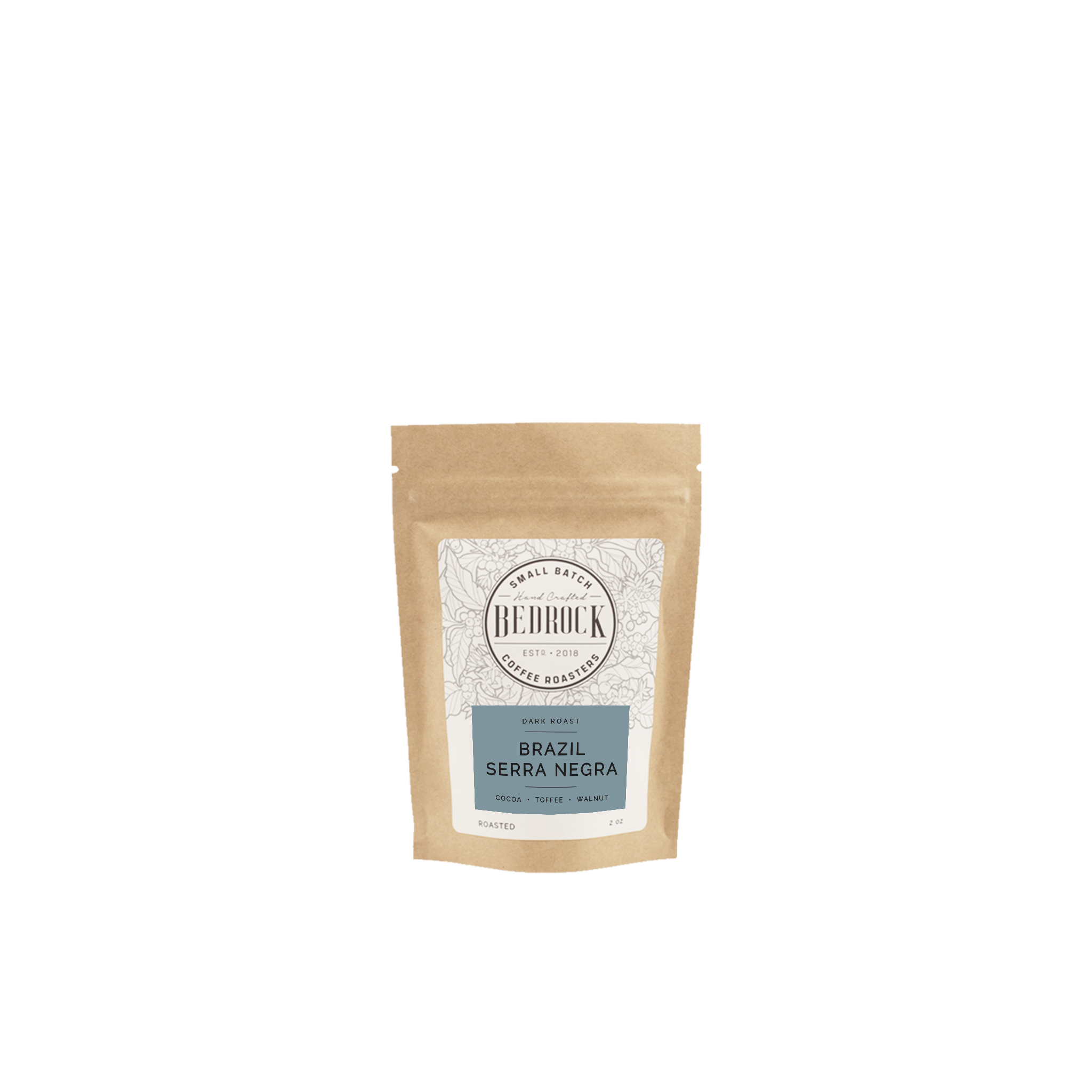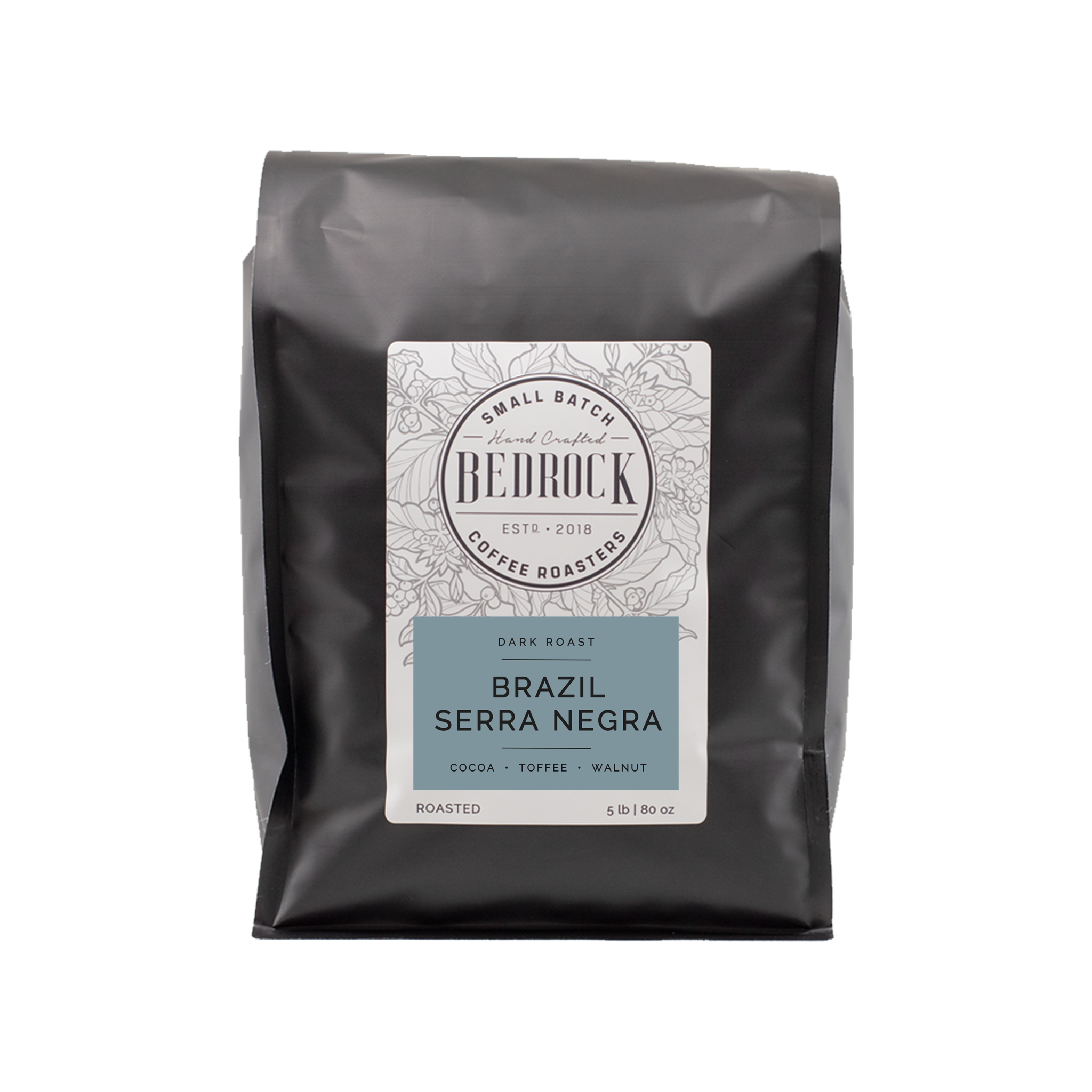Description
Our most popular coffee, the Brazil is an easy-drinking dark roast that brings that traditional coffee flavor without the bitterness. Low acidity, smooth and nutty; this will be sure to satisfy your morning cravings.
| Tasting Notes | Cocoa, Toffee, Walnut |
|---|---|
| Country of Origin | Brazil |
| Region | Varies Regions |
| Altitude Grown | 750-1100 MASL |
| Variety | Common Brazilian Varieties |
| Process | Natural |
Country: Brazil

Brazil has become synonymous with coffee since the 18th century when the first coffee plants were brought in. By 1920, Brazil was producing 80% of the world's coffee supply. Weather in Brazil is a major deciding factor in global market trends and pricing that affect the coffee-commodity market. Brazil's post-harvest processing, largely in response to productivity, climate, and desired profile, is somewhat unique with Pulped Natural and Natural processing dominating the industry. Both processes lend the coffees a nutty creaminess with a tempered fruit tone. Overall, Brazil is one of the two largest coffee producers annually, along with Colombia.
Brazil Sourcing

Cafe Imports has been sourcing coffee from Brazil for nearly 20 years, and currently works with two primary exporters in the Carmo de Minas region. Founder and partner Andrew Miller imported his first container of coffee from Brazil in 1994, which became the genesis of the signature Brazil offering, Serra Negra. Cafe Imports has developed relationships with innovative producers in Brazil, and has implemented programs like Best Cup cupping competition and live auction to give recognition to producer partners and introduce new buying opportunities. Through these programs, Cafe Imports hopes to make complex cup profiles the norm for Brazilian coffees.
Variety: Common Brazilian Varieties

Although this offering is not traceable to a specific variety, Brazil's most commonly grown coffee varieties are Bourbon, Yellow Bourbon, Catimor, Catuai, Maracaturra, Maragogype, and Typica.
Proces: Natural

Brazilian Naturals are picked either selectively by hand or strip-picked by hand or mechanically for more commercial quality. They are then typically spread to dry on patios or, in the production of some specialty coffees, dried on raised beds. Drying can take 20–25 days, depending on the weather.

